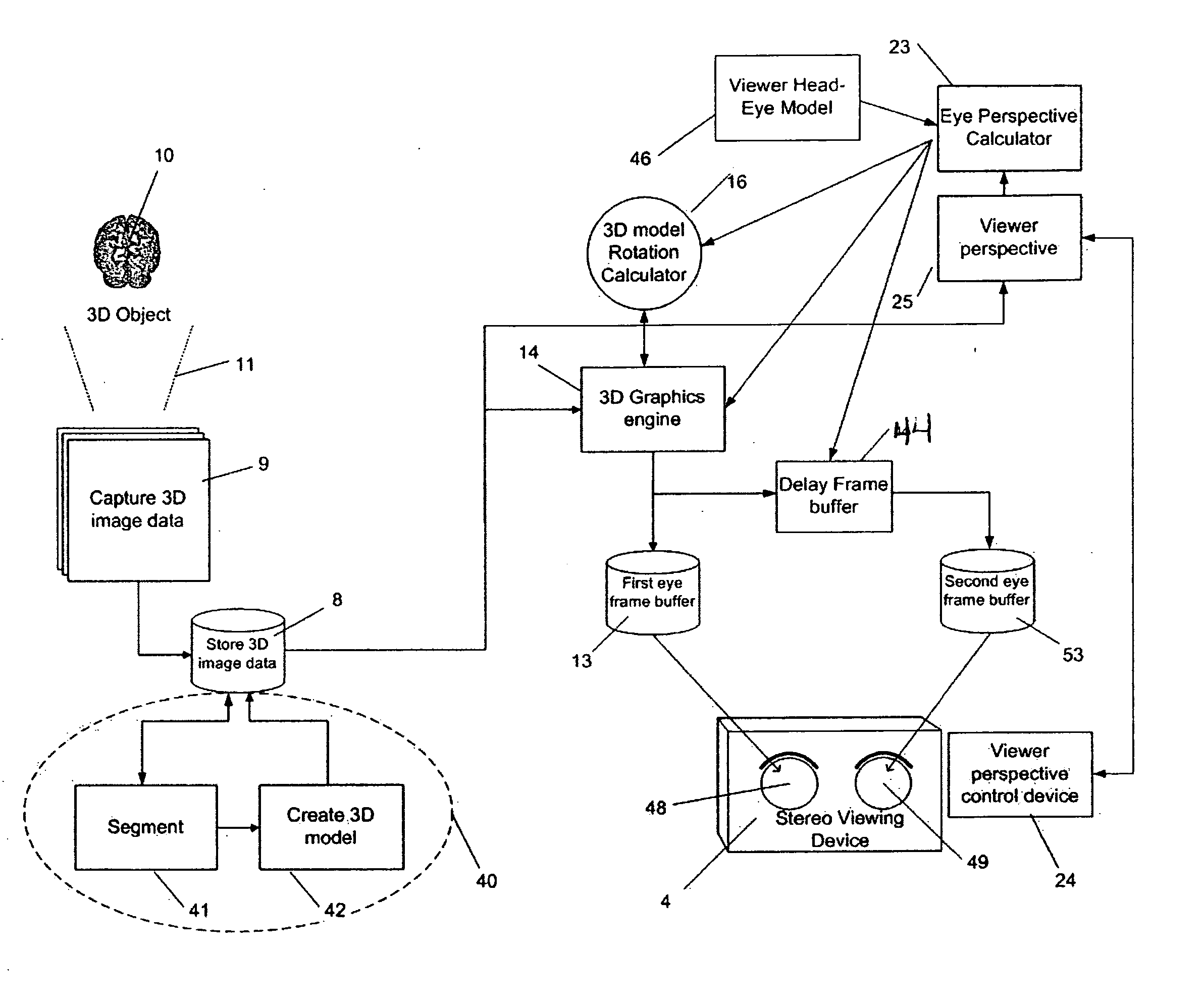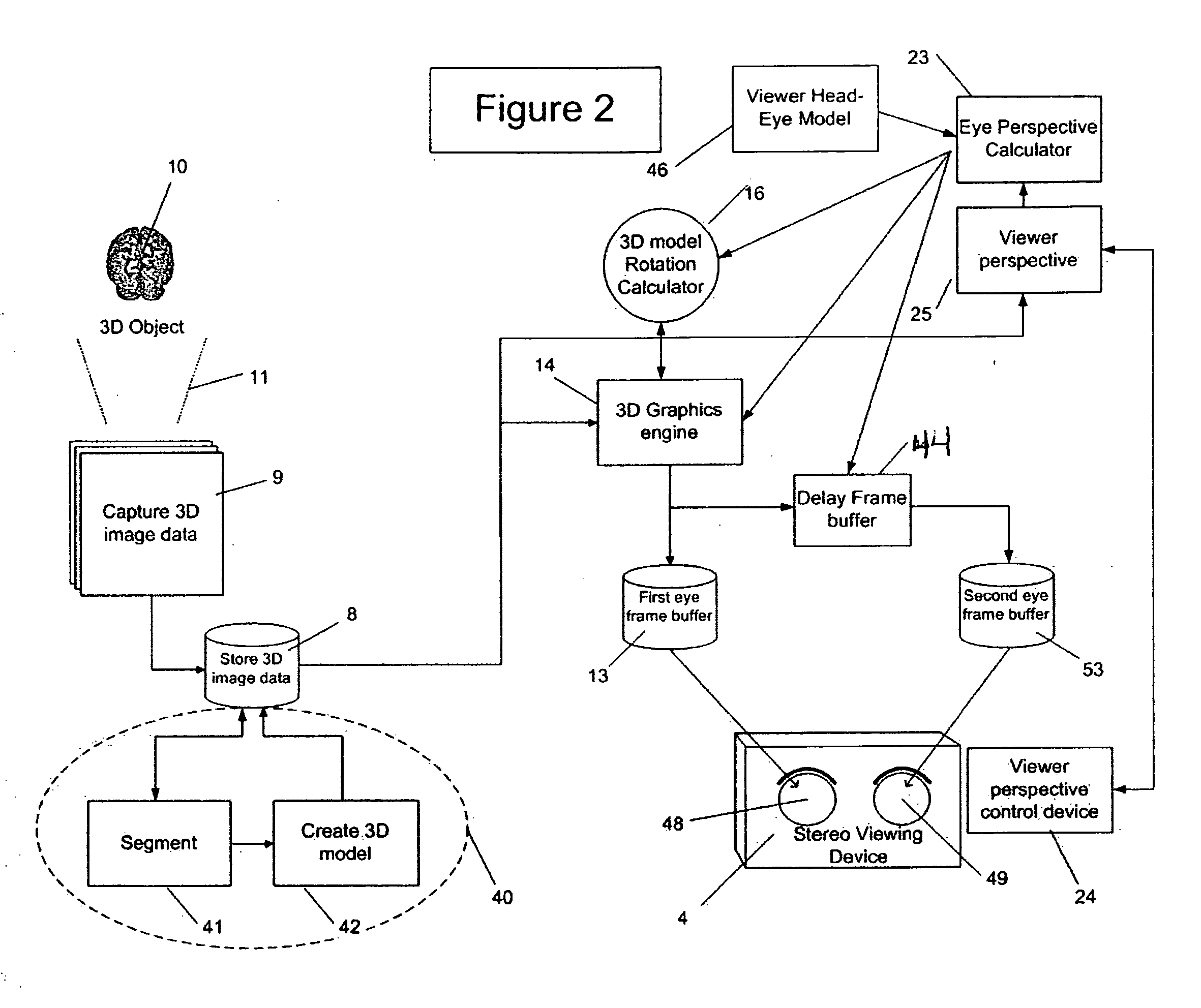Analyzing radiological image using 3D stereo pairs
- Summary
- Abstract
- Description
- Claims
- Application Information
AI Technical Summary
Benefits of technology
Problems solved by technology
Method used
Image
Examples
Embodiment Construction
[0048]FIG. 1 is a schematic of a prior art stereo pair calculation from 3D image model using 3D stereo pairs and is shown as background for this invention. Many of these components are also used in FIG. 2 and are explained in the context of the present invention. Of particular distinction is the presence of two (2) 3D graphics engines 14 shown in FIG. 1 as prior art. This invention, as 25 described in FIG. 2, uses a single 3D graphics engine 14 with the addition of the 3D model rotation calculator 16 and delay frame buffer 44 not used in the FIG. 1 prior art.
[0049]FIG. 2 shows the system of this invention for analyzing medical images 9 using 3D stereo pairs. Medical image data 9 is captured by scanning object 10 using scanner 11 which is capable of producing 3D image data. This medical image data 9 is stored in data storage 8.
[0050] Image segmentation 41 is performed on the medical image data 9 resulting in labeled regions of medical image data 9 that belong to the same or similar...
PUM
 Login to View More
Login to View More Abstract
Description
Claims
Application Information
 Login to View More
Login to View More - R&D
- Intellectual Property
- Life Sciences
- Materials
- Tech Scout
- Unparalleled Data Quality
- Higher Quality Content
- 60% Fewer Hallucinations
Browse by: Latest US Patents, China's latest patents, Technical Efficacy Thesaurus, Application Domain, Technology Topic, Popular Technical Reports.
© 2025 PatSnap. All rights reserved.Legal|Privacy policy|Modern Slavery Act Transparency Statement|Sitemap|About US| Contact US: help@patsnap.com



